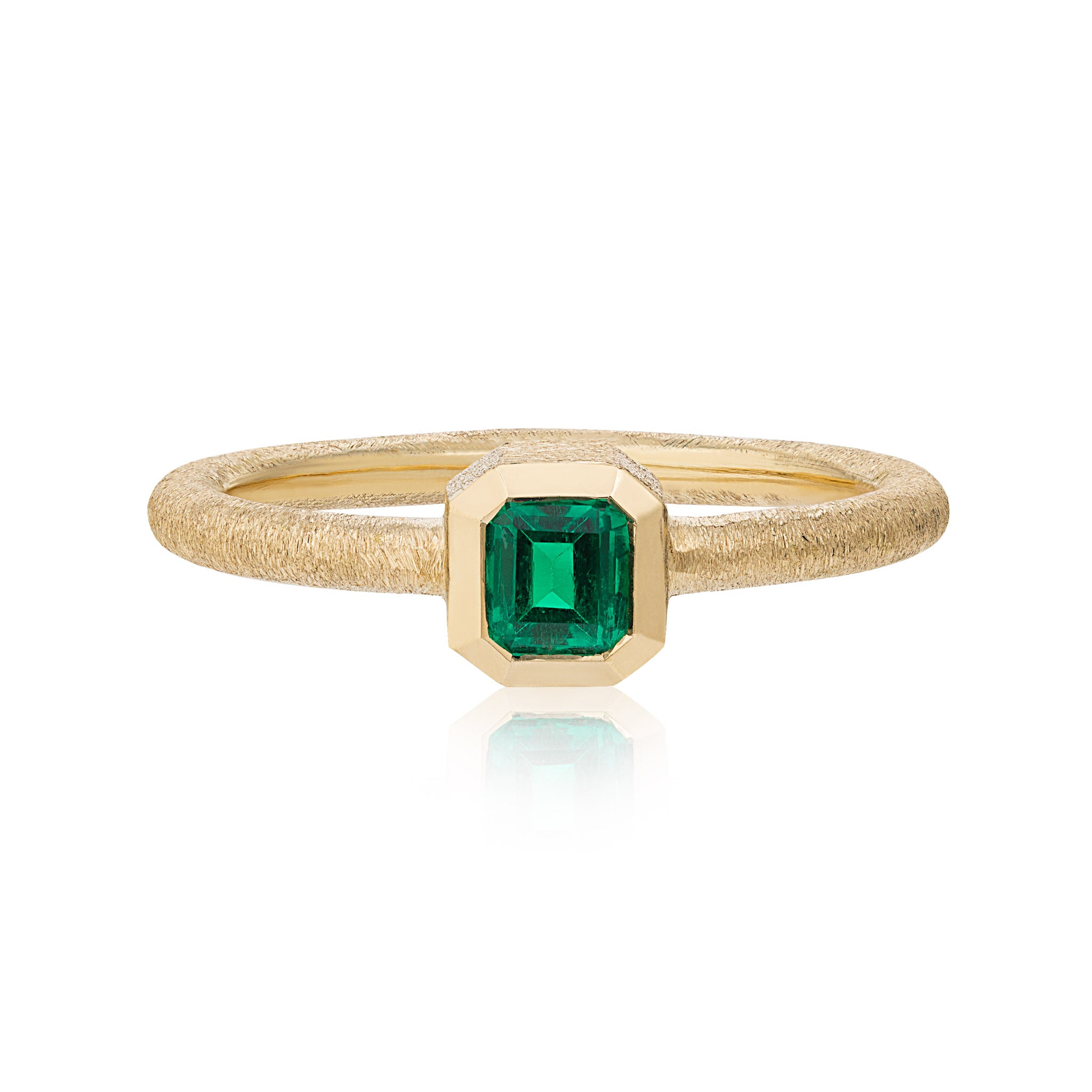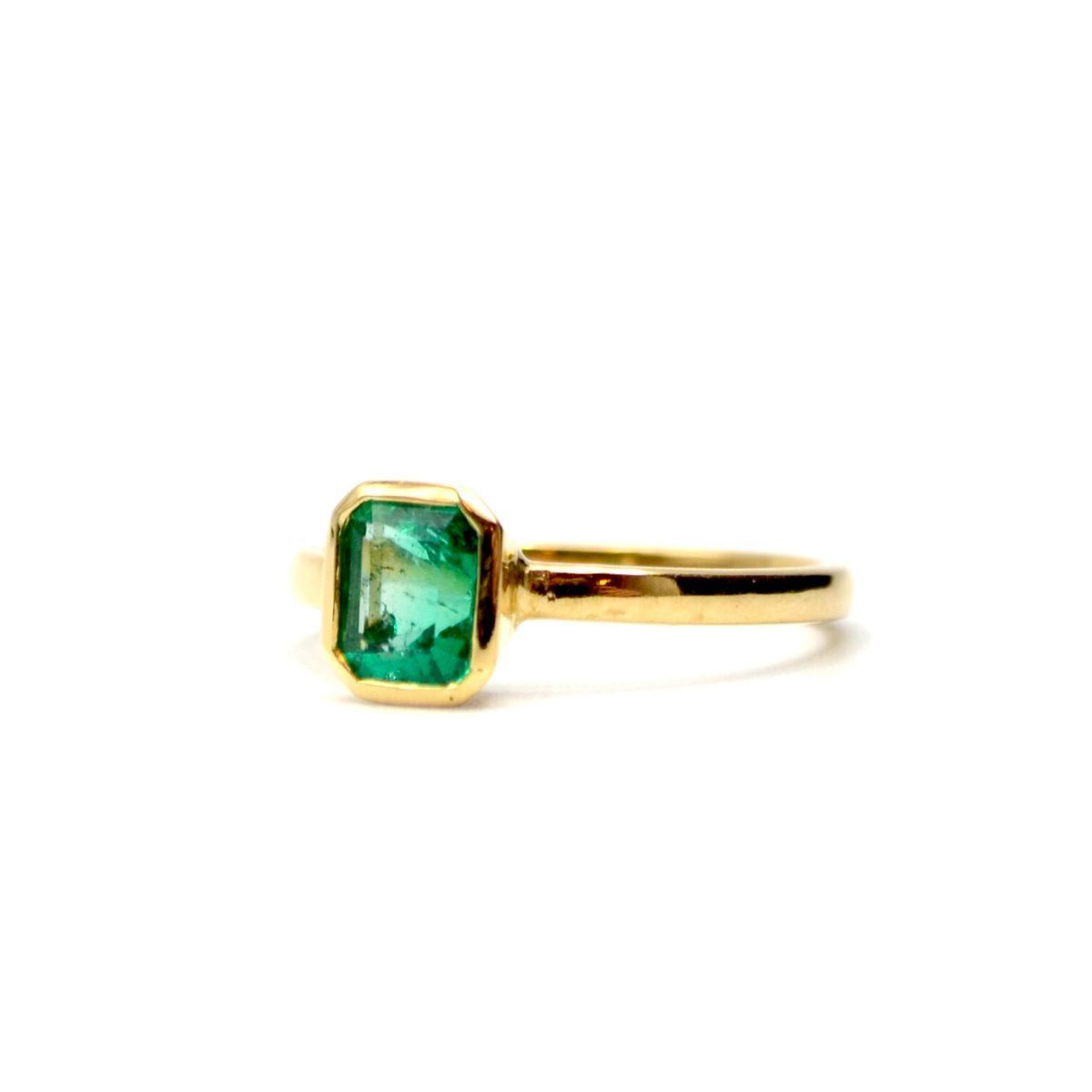
(An emerald mining operation in the remote Muzo region of Colombia's Boyacá Department)
Emeralds have been growing in popularity for some time but it is the Colombian variety that have seen the greatest increases in value over recent years. A good example of this comes from Rayaz Takat, CEO of New York based Takat, specialists in stones of specific provenance, who stated: “people have been buying more Colombian stones, they want reassurance that the pieces will sell down the road at auction, and Colombian emeralds are more well known than others.” Since their discovery by the ancient Aztec, Mayan and Inca civilisations of South America, and their subsequent European discovery by the Spanish conquistadors, Colombian emeralds have adorned the collections of kings, emperors, Mughal dynasties and princely rulers across the globe. Colombian emeralds contain less iron and have fewer impurities than emeralds found in Brazil, Zambia, Afghanistan and elsewhere. They are also highly rated for their deep 'Platonic' green colouration, which is further enhanced by their natural fluorescence. There is currently a 'scramble' for licences in Colombia's most productive emerald mining regions: Muzo, Coscuez and Chivor. The price of rough stones has increased by over 165% since 2005 (gemval.com 1 February 2018) and this is not just down to increasing global demand, it is also driven in part by rising living standards and a government drive to improve working practices and environmental standards in the mining regions. As a result of these factors Colombian production actually fell 6% in 2015 and has been struggling ever since.
 (Famed for their verdant green colour and superior clarity, Colombian emeralds are the most prized)
(Famed for their verdant green colour and superior clarity, Colombian emeralds are the most prized)
In the words of Stuart Robertson, VP and Research Director at Gemworld International: "when people talk about emeralds, it’s the classic Colombian—and then there’s everything else.” It has only been in the last five years, since the death of Victor Carranza, the emerald "czar," that production of Colombian emeralds has opened up to foreign investment. Since 2013 hundreds of millions of dollars have poured into the region, spearheaded by Gemfields PLC and Muzo International, with the express aim of increasing production by modernising equipment and processes and consolidating supply chains. In spite of these attempts, increases in output have been painfully slow and the price per carat continues its ascent! In addition to the supply side, these large multinationals have also invested heavily in the sales channels for their finished products and the marketing and advertising thereof to the new generation of young, financially independent and ethically aware, millennial consumer. It is transparency that is key to engaging with these new, savvy customers. Jason Woods, of Muzo Emerald Colombia, stated recently at the Baselworld jewellery fair in Switzerland that the key is to offer "100% traceability throughout the emerald production chain," (ensuring that) "each emerald is uniquely indentified at the moment it is extracted from the ground and tracked throughout its journey until it reaches the consumer's hands, as an individual gemstone or as part of a finished jewellery piece."

(The once lawless and remote mining regions of Colombia have now embraced modernity)
In the pursuit of ethical credibility and integrity, technology has lent a helping hand. In 2017 Gübelin Gem Lab, Lucerne, Switzerland, developed the emerald "paternity test," which utilises nanotechnology to 'mark' each individual stone at the point of production so that its provenance can be proven throughout its onward journey. Gemfields, who entered the emerald market via Zambian operations, acquired the rights to the Coscuez mine in 2015 and they have continued this drive to transparency. Coscuez is located less than 10 miles from Muzo and the two mining areas are intense rivals. As former Gemfields CEO, Ian Harebottle, stated: “We are leading the call for growth and increased transparency across the industry and therefore welcome Muzo’s own commitment to global promotions, distribution, and responsible sourcing.” The reason for the strong demand for Colombian emeralds was described vividly by Marco Hadjibay, Creative Director of Bayco, a New York fine jewellery business, when he commented: “It’s easier to sell Colombian stones than Zambian stones. If you take two stones that look the same and one is from Africa and one is from Colombia, the Colombian will always fetch a higher price!” Enhancement and treatment methods applied to Colombian (and all other) emeralds have come under closer scrutiny in recent times. It is crucial to read the laboratory certificate carefully and compare it to the stone in question, in order to ensure that no further treatment has been applied after the lab issued the certificate.

(Emerald value chart 2005-2018 - source: gemval.com 1st February 2018)
As with rubies, sapphires and many other coloured stones, commercial or 'industrial' grade Colombian emeralds are easily available in vast quantities, whereas fine and extra fine stones are far harder to source. It spite of this disparity of supply across the spectrum of emerald quality, it is clear that prices still have significant headroom for the foreseeable future. As Stuart Robinson sees it: “A couple of years ago Colombian emeralds were a bargain; now, they are a good buy.” Fine emeralds from 1-5 carats can fetch US$5,000-10,000 per carat on the wholesale market and extra vine US$10,000-$15,000 (depending upon size and treatment). When buying an emerald it is crucial to examine the stone from all angles, as claws and settings can hide inclusions and fissures. It is also essential to be wary of stones that are too 'perfect' or low priced, as many of these may actually be synthetic - all emeralds contain some inclusions and none are sold at a tiny fraction of their true value. Anyone looking for an in-depth understanding of the nuanced emerald market would do well to read Ron Ringsrud's fascinating book entitled Emeralds: A Passionate Guide. Ringsrud is an experienced emerald dealer and scholar on the subject, having devoted many years to academic and practical study of these enigmatic, verdant stones. As well as buying, selling and writing about emeralds, Ringsrud has also set up a cutting facility in Bogotá, Colombia, the world's largest trading centre for emeralds. It is clear that for dealers, collectors, scholars and producers alike, Colombia's emeralds will remain at the forefront of their collective interest and endeavour for the foreseeable future.
(Traditional artisanal emerald mining, still widely practiced, involves backbreaking manual labour)

To learn more about emeralds and coloured gemstones visit:
londonde.com


 (31)
(31)
